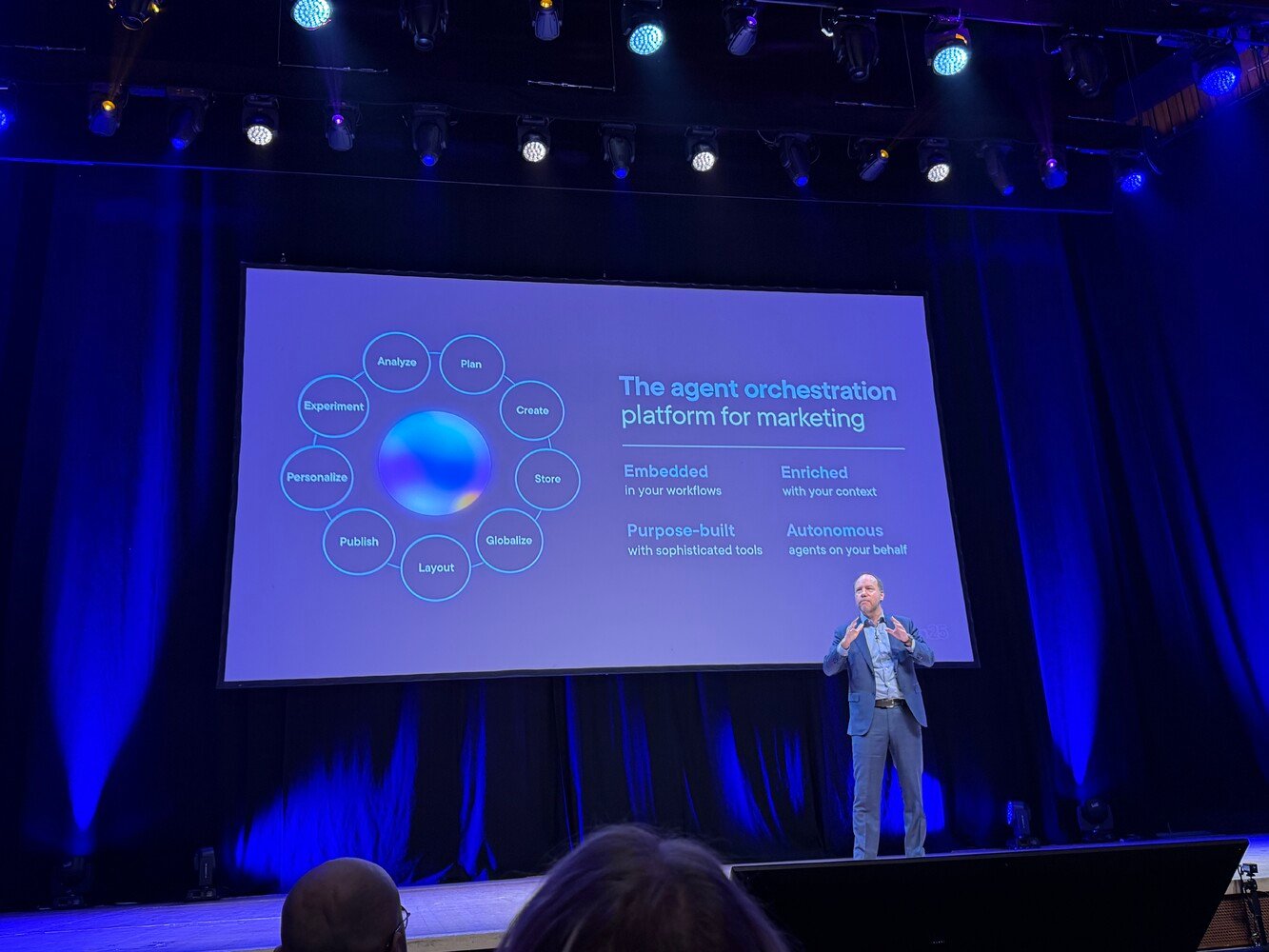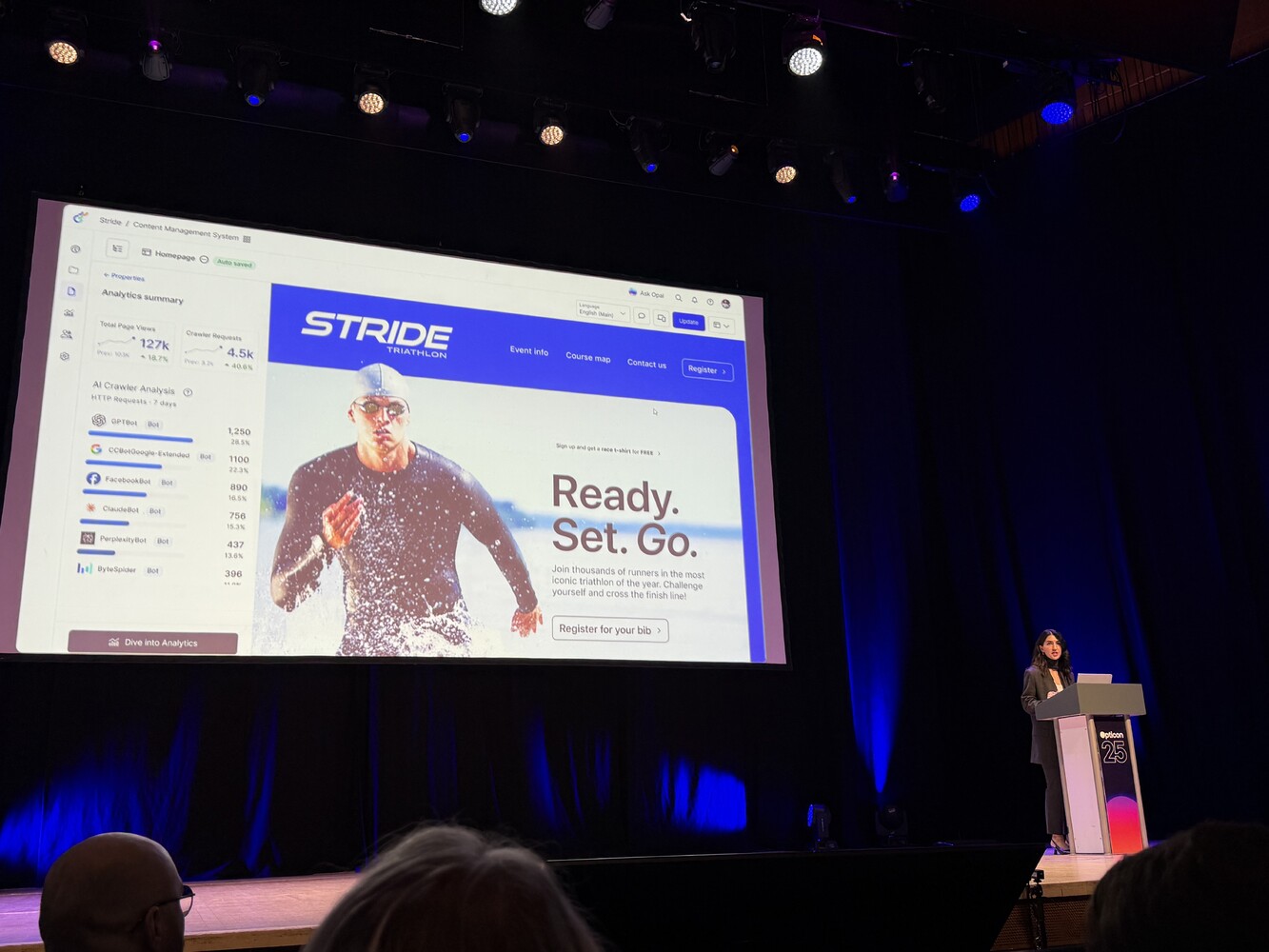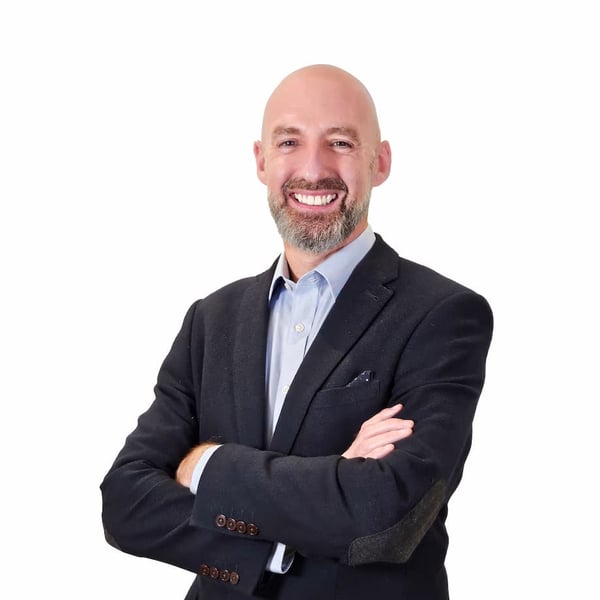Opticon London 2025 has wrapped up, and what a whirlwind of game-changing insights it was. From bold ideas to practical strategies, the event gave enterprises plenty to think about when it comes to the future of digital experiences.
As the Optimizely’s largest global partner, winners of the global Opal Hackathon and with the highest number of Opal AI-certified professionals of any Optimizely partner, we were proud to be part of those conversations.
And to make sure the highlights don’t get lost in the buzz, our Executive Vice President, Mark Welland, pulled together a recap that really struck a chord. We’re sharing his reflections here in full - a snapshot of what enterprises should carry forward from Opticon London 2025.
*The recap starts from here
This week I joined 1,600 attendees at The Barbican in London for Optimizely’s premier event in Europe, Opticon25 London. Existing and prospective Optimizely customers alike gathered with partners and the Optimizely leadership team for what was the biggest Optimizely event ever! While there were tote bags, charging cables and the usual conference buzz, the real story was bigger: the future of digital experience isn’t about websites or campaigns alone anymore. It’s about humans and AI agents working side by side, reshaping how marketing gets done and how we craft outstanding experiences for customers.
Here are my highlights, key takeaways and also a bigger picture view of what this means for those of us working at the intersection of technology, marketing, and customer experience.
AI is no longer an add-on... it’s the operating system for marketing
The clear headline from Opticon25 was that AI has moved from the edges of marketing into its core. Opal, Optimizely’s beating AI heart, isn’t an ‘assistant’ anymore. It’s an agent orchestration layer. Sounds cool, but what does that really mean? It’s capable of analysing campaign performance, generating content, personalising experiences and even running tests and reporting back, all without constant human handholding.
Optimizely’s CEO, Alexander Atzberger, framed this as our new internet moment. Just as the late 1990s reshaped business with the dot-com boom, AI is about to transform how digital work is done. This isn’t incremental; it’s a once-in-a-generation shift.
What stood out to me is the move from work at scale to orchestration at scale. And that means, instead of helping humans churn out more content, AI agents are taking over the repetitive execution, leaving marketers to focus on strategy and judgement. It’s not replacement; it’s augmentation. Rupali Jain spoke about a concept (which came up repeatedly) of the infinite workforce: human talent amplified by AI agents, evolving roles rather than removing them.

Alex Atzberger introduces Opal as The Agent Orchestration platform for marketing
Search and discovery are being rewritten – GEO is the hot topic
Another key theme was how discovery is changing. More than 42% of searches now include AI overviews, queries are getting longer (often 15+ words) and clicks on websites are down even as impressions rise.
Put simply: people aren’t looking for “search results” anymore. They’re looking for answers. The traditional SEO playbook of stuffing keywords into content and building long user journeys is changing. Audiences increasingly arrive at a brand’s digital presence for two things: validation and action.
The winners in this brave new world won’t necessarily be the market leaders, but the thought leaders. Those who can anticipate and directly answer specific, nuanced customer questions will earn greater visibility in the AI-driven discovery layer. Add to this the rise of Generative Engine Optimisation (GEO) and Agentic Experience Optimisation (AEO), and you can see how the rules of visibility are being rewritten.

Nazanin Ramezani demos design to code and the new Visual Builder
From Figma to Code:
A standout demo from Nazanin Ramezani and Britt Hall showed how easily a Figma design can be converted into live code instantly. No development, no delays. Using the power of the new Visual Builder to make agile, dynamic changes. It raises the topic of governance questions but shows the potential for speed + oversight together.
Trust is being redefined
Opticon25 also underscored how trust now operates on two levels. First, the familiar human trust built on brand reputation, authority, and authenticity. But second, the technical trust signals that AI agents use to validate content: structured data, E-E-A-T (a Google acronym for Experience, Expertise, Authoritativeness, and Trustworthiness), accessibility, compliance, and consistency.
Every brand now has two front doors. One for humans, one for agents. If your structured data, product records and content signals aren’t coherent, the “agent experience” collapses and that has knock-on effects for the human experience too.
IT teams, however, tend to be sceptical of hype. They’re looking for resilience, system synergy and value for money. If AI features add friction or require endless training before they show value, adoption will stall. The challenge is to deliver trustworthy systems that feel easy, reliable, and safe to use, that meet the combined needs of marketers and IT buyers.
Experimentation is the antidote to uncertainty
If there was one phrase repeated more than any other in London, it was this: “The antidote to uncertainty is experimentation.”
In a world where customer behaviour, AI platforms, and even search engines are shifting by the month, experimentation isn’t a nice-to-have. It’s the only way to move forward with confidence. Teams using Opal are already reporting a 79% increase in experiment velocity and a 10% improvement in win rates. That’s not anecdotal. It’s empirical, measurable impact.
And experimentation is becoming smarter. GEO-specific insights now show how context shapes behaviour, and new scoring frameworks are helping teams prioritise experiments for real-world outcomes.
The broader lesson is that in volatile times, the only sustainable strategy is to test, learn, and adapt faster than your competitors. AI can help accelerate that cycle, but the discipline of experimentation remains human-led.
![]()
Kian Gohar revealed his findings of AI adoption from his HBR research article
Adoption will happen in steps, not leaps
Another thread through the event was pragmatism. Kian Gohar shared a “10-day Opal sprint” where teams worked on small, achievable tasks to build confidence. Their confidence scores rose by 15% in just ten days.
AI adoption in enterprises doesn’t happen because of keynote demos or shiny roadmaps. It happens because teams take manageable steps, remove small blockers, iterate and build momentum over time.
And leaders need to treat AI as a journey, not a switch. Cultural change matters as much (if not more so) as technical rollout. Creating space for teams to learn, modelling new behaviours, and recognising the human factor in AI adoption are just as important as the AI itself.
Platform evolution matters too
It wasn’t all about Opal. Optimizely’s roadmap for CMS 13 and Commerce 15 brings long-awaited improvements. Coming in Q1 next year. From smoother upgrades to new webhooks and the Visual Builders. The Connect Platform is also evolving into a central hub, linking ERP, DAM, and Commerce into Opti Graph and making that data available to Opal.
This matters because it widens the opportunity: not every customer will adopt AI immediately, but upgrading to the latest CMS or Commerce version unlocks it. Faster publishing cycles, better integration, and cleaner data are all prerequisites for unlocking AI’s potential.
My takeaways from Opticon25
Here are the six points that struck me most:
- AI has crossed from promise to practice. Opal is no longer just a proof of concept; it’s embedded into real workflows. Get onboard or get left behind.
- We are at another “internet moment.” The infinite workforce model is reshaping roles, not removing them.
- Search behaviour has changed forever. Optimising for discovery now means optimising for humans and agents.
- Trust is the currency. Without clean data, clear signals, and authenticity, both humans and machines will move on.
- Experimentation is non-negotiable. Context, prioritisation, and velocity are the drivers of impact.
- Adoption is built in steps. Confidence compounds when teams start small and leaders treat AI as a journey.
![]()
Beth Woolveridge, Head of Digital at Grant Thornton International presenting their incredible CMS and Experimentation journey and their partnership with Niteco.
Where Niteco fits in
For me, Opticon25 wasn’t just a showcase of what Optimizely is building. It was also a reminder of the responsibility partners have to make this shift real for customers.
At Niteco, we’re proud to be Optimizely’s largest global partner. And we’ve doubled down on AI and Optimizely. With over 50 Opal-certified professionals we have more than any other partner globally. And a recent win at Optimizely’s Global Partner Opal Hackathon. We’ve built a reputation for our technical excellence and performance obsession. We’ve helped customers unlock these new features and many other benefits of a modern platform by moving them from legacy versions of Optimizely CMS and Commerce into the new AI-enabled era - unlocking the power of Opal, agentic workflows, and the latest CMS and Commerce features.
That’s where our role is clear: not just advising on what’s possible but delivering the practical upgrades and integrations that make AI valuable day-to-day.
For clients, that means less hype, more outcomes. For their customers, it means digital experiences that feel effortless, responsive, and trustworthy.
And in a world where GEO is rapidly becoming the new SEO, that means our customers are discovered in every type of search whilst their competition is becoming invisible.
Opticon25 made one thing clear: the future of digital experience is hybrid - part human, part agentic. At Niteco, we don’t just follow that future. We help our clients lead it.
![]()
Optimizely President and CMO, Shafqat Islam and the brilliant closing keynote from the Marketoonist, Tom Fishburne
----
This recap article was originally published on Mark's LinkedIn.
For more information about our AI innovations, visit here.
to transform your business and drive results?
